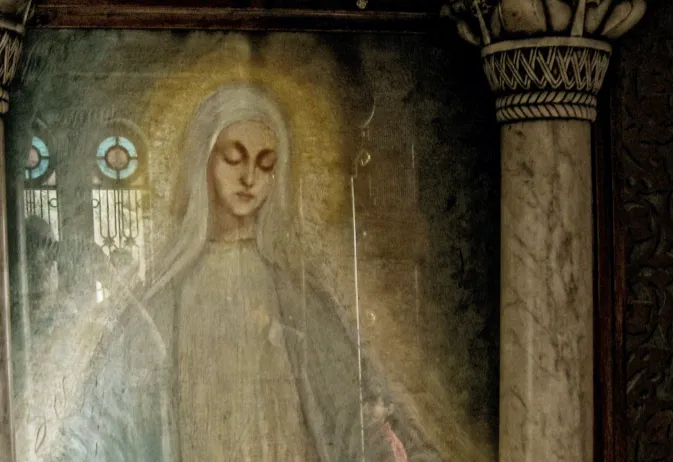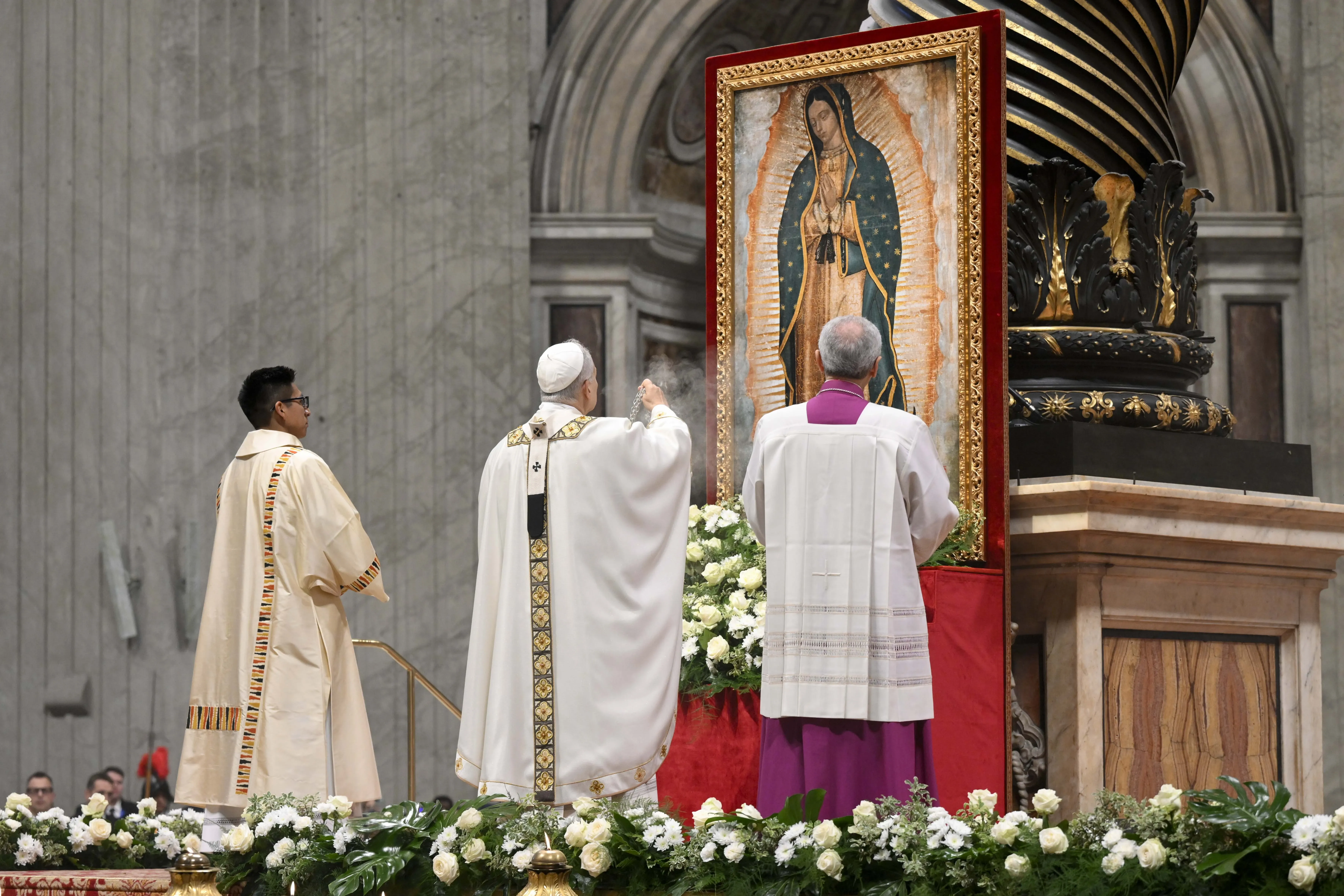Restrictions on pronouncements
The new guidelines note that during the discernment process “the diocesan bishop is to refrain from making any public statement in favor of the authenticity or supernatural nature of such phenomena and from having any personal connection with them.”
The document continues: “If forms of devotion emerge in connection with the alleged supernatural event, even without true and proper veneration, the diocesan bishop has the serious obligation of initiating a comprehensive canonical investigation as soon as possible to safeguard the faith and prevent abuses.”
In those cases, the bishop must establish an investigatory commission to include at least one theologian, one canonist, and “one expert chosen based on the nature of the phenomenon.”
The document also stipulates that an interdiocesan commission must be created to evaluate cases that involve “the competence of multiple diocesan bishops.”
(Story continues below)
The new norms emphasize that should “alleged supernatural events continue” during the investigatory process and “the situation suggests prudential measures,” then it is incumbent upon the bishop to “enforce those acts of good governance to avoid uncontrolled or dubious displays of devotion, or the beginning of a veneration based on elements that are as of yet undefined.”
Weighing positives and negatives
During the evaluation phase, the commission is to look at both the “positive” and “negative” criteria of the alleged apparition, the DDF’s new norms state.
The document identifies four positive criteria:
-
“The credibility and good reputation of the persons who claim to be recipients of supernatural events or to be directly involved in them, as well as the reputation of the witnesses who have been heard.”
-
“The doctrinal orthodoxy of the phenomenon and any messages related to it.”
-
“The unpredictable nature of the phenomenon, by which it is evident that it is not the result of the initiative of the people involved.”
-
“The fruits of the Christian life, including a spirit of prayer, conversions, vocations to the priesthood and religious life, acts of charity, as well as sound devotion and abundant and constant spiritual fruits.”
The new norms also set forth six negative criteria to be considered:
-
“The possibility of a manifest error about the event.”
-
“Potential doctrinal errors.”
-
“A sectarian spirit that breeds division in the Church.”
-
“An overt pursuit of profit, power, fame, social recognition, or other personal interest closely linked to the event.”
-
“Gravely immoral actions committed by the subject or the subject’s followers at or around the time of the event.”
-
“Psychological alterations or psychopathic tendencies in the person that may have exerted an influence on the alleged supernatural event.”
At the end of the evaluation process, the bishop and a delegate he appoints to oversee the commission’s work are to prepare a “personal votum” in which the bishop proposes to the dicastery a final judgment. That decision will normally follow one of six formulas:
-
Nihil obstat: “Without expressing any certainty about the supernatural authenticity of the phenomenon itself, many signs of the action of the Holy Spirit are acknowledged ‘in the midst’ of a given spiritual experience, and no aspects that are particularly critical or risky have been detected, at least so far,” the document states.
-
Prae oculis habeatur: “Although important positive signs are recognized, some aspects of confusion or potential risks are also perceived that require the diocesan bishop to engage in a careful discernment and dialogue with the recipients of a given spiritual experience.”
-
Curatur: “Although important positive signs are recognized, some aspects of confusion or potential risks are also perceived that require the diocesan bishop to engage in a careful discernment and dialogue with the recipients of a given spiritual experience.”
-
Sub mandato: “In this category, the critical issues are not connected to the phenomenon itself, which is rich in positive elements, but to a person, a family, or a group of people who are misusing it.”
-
Prohibetur et obstruatur: “While there are legitimate requests and some positive elements, the critical issues and risks associated with this phenomenon appear to be very serious.”
-
Declaratio de non supernaturalitate: “In this situation, the dicastery authorizes the diocesan bishop to declare that the phenomenon is found to be not supernatural,” the document states.
Next steps
Following the DDF’s final decision, the diocesan bishop, unless directed otherwise by the dicastery, “will inform the national episcopal conference of the determination approved by the dicastery” and “will clearly make known to the people of God the judgment on the events in question.”
The document notes that a nihil obstat “allows the pastors of the Church to act confidently and promptly to stand among the people of God in welcoming the Holy Spirit’s gifts that may emerge ‘in the midst of’ these events.”
The document explains that the phrase “in the midst of” denotes that “even if the event itself is not declared to be of supernatural origin, there is still a recognition of the signs of the Holy Spirit’s supernatural action in the midst of what is occurring.”
But the norms stress that in cases where a nihil obstat is granted, “such phenomena do not become objects of faith, which means the faithful are not obliged to give an assent of faith to them.”
As in the case of charisms recognized by the Church, the document states, “they are ‘ways to deepen one’s knowledge of Christ and to give oneself more generously to him, while rooting oneself more and more deeply in communion with the entire Christian people.’”
In the press conference on Friday, meanwhile, Fernández said the new norms will allow bishops to “have a prudential character so that the faithful can accept this in a prudent way.”
In the new guidance, Fernández said, the Church “leaves the faithful free to devote their attention to this phenomena or not.”
“Revelation that has already happened is the word of God. It contains everything we need for our Christian life,” he said.









